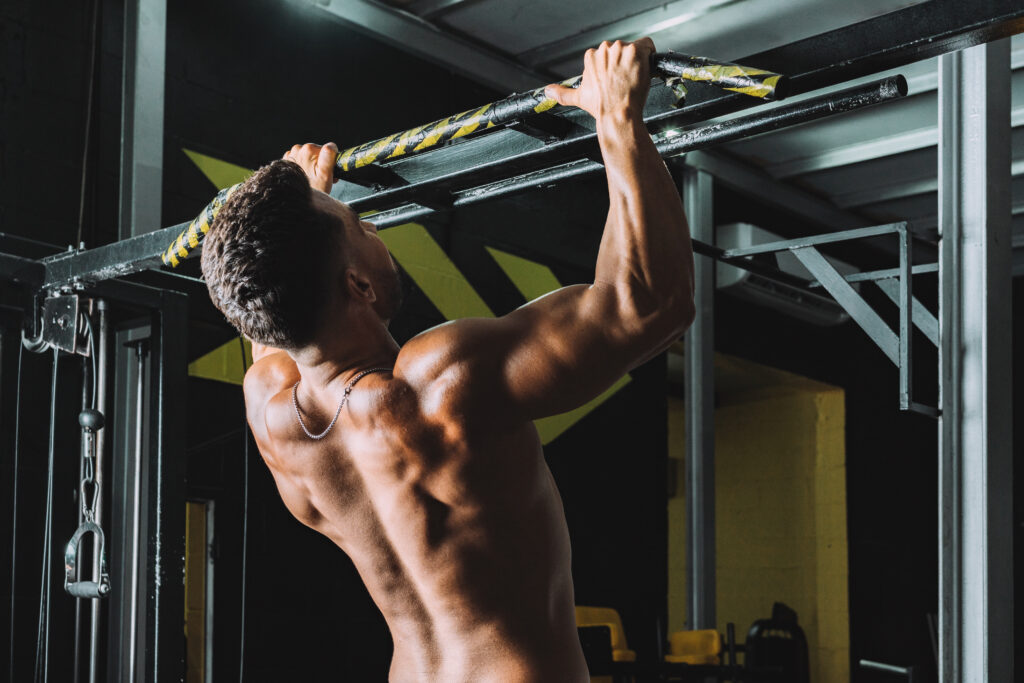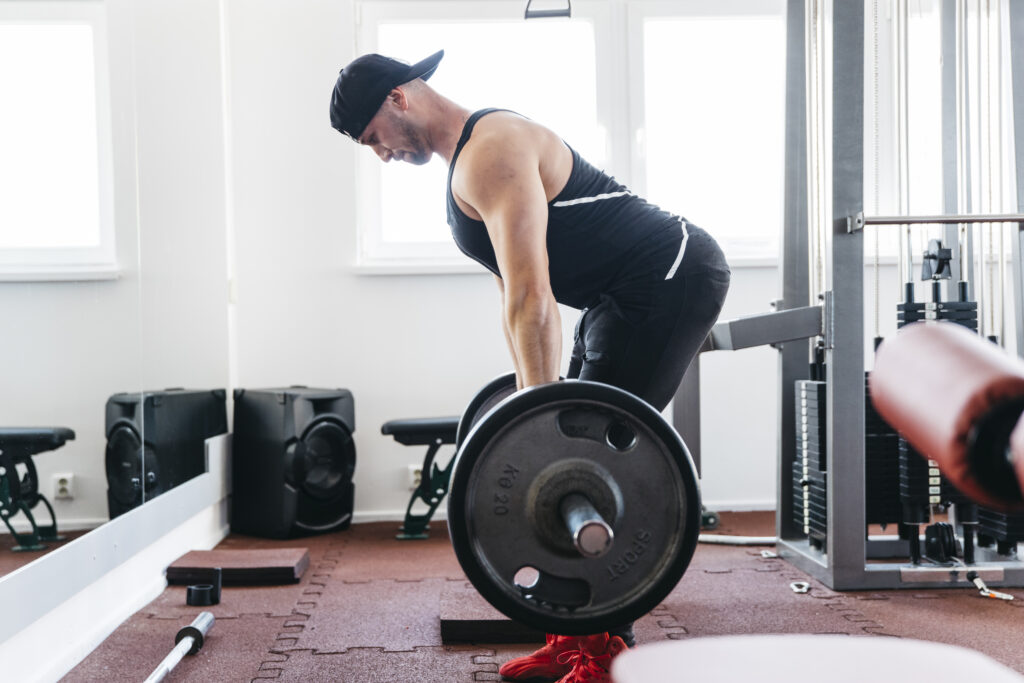Introduction
When building a full-body strength routine, efficiency and effectiveness are key. Instead of cramming dozens of exercises into your workout week, research shows that a few well-selected compound movements can drive superior results. Four standout exercises—the barbell bench press, pull-up, back squat, and Romanian deadlift (RDL)—have repeatedly ranked among the top Jefit movements for muscle activation and strength gains. Here’s why you should think of making them the cornerstone of your training plan.
1. Barbell Bench Press: The King of Upper Body Pushing
The bench press has long been a staple for developing upper body strength. This classic barbell lift targets the pectoralis major, anterior deltoids, and triceps brachii. According to EMG studies, it’s among the top performers for activating the chest and triceps.
EMG Research:
A study by Boeckh-Behrens & Buskies (2000) found the barbell bench press activates 95 percent of the pectoralis major and 79 percent of the triceps, outperforming many machine-based or isolated alternatives.
Why Include It?
Not only does the bench press build raw pushing strength, but it also trains shoulder and core stability when performed correctly. Whether your goal is hypertrophy, athletic performance, or just general strength, it’s a non-negotiable upper body push exercise.

2. Pull-Up: The Ultimate Upper Body Pull
The pull-up is one of the most effective exercises for building upper back and arm strength using body weight. It recruits multiple muscles, primarily the latissimus dorsi, biceps, and trapezius.
EMG Research:
Research by Signorile et al. (2002) showed the pull-up elicits significantly higher lat activation than lat pulldowns or other back machines. It’s a superior vertical pull movement for serious strength development.
Why Include It?
Pull-ups build both relative and absolute strength. They improve grip, shoulder mobility, and torso control. As a bonus, they’re scalable with bands or added weight.
3. Barbell Back Squat: The Foundation of Lower Body Strength
The back squat remains one of the most effective compound lifts for developing quadriceps, glutes, hamstrings, and core stability. It mimics real-world movement patterns like sitting, lifting, and jumping.
EMG Research:
Escamilla et al. (2001) demonstrated high EMG activity in both the gluteus maximus and quadriceps during squats—ranking higher than leg press or lunges in some cases. Why Include It?
The squat improves force production, bone density, and neuromuscular coordination. It’s essential for athleticism, functional strength, and power development.
4. Romanian Deadlift (RDL): The Posterior Chain Hero
Unlike the conventional deadlift, the RDL places more emphasis on the hamstrings, glutes, and lower back, helping to develop posterior chain strength in a more isolated and controlled way.
EMG Research:
A 2019 study published in the Journal of Strength and Conditioning Research revealed that RDL’s generated significantly greater hamstring activation compared to traditional deadlifts and leg curls.
Why Include It?
RDL’s are essential for balancing out the dominant quad work of squats. They’re also fantastic for improving hip hinge mechanics, which are critical for performance and injury prevention.
Integration into Your Plan
These four exercises can be used as the cornerstone of a 3- or 4-day full-body split. Here’s a sample layout:
- Day 1: Bench Press + Squat + Accessories
- Day 2: Pull-Up + RDL + Core Work
- Day 3: Repeat with variations (incline bench, front squat, etc.)
This structure ensures that you’re targeting all major muscle groups, building functional strength, and getting the most bang for your training buck.
Final Thoughts
If you’re looking for a simplified yet science-backed full-body workout routine, these four exercises check all the boxes. They’re time-efficient, stimulate high levels of muscle activation, and translate to real-world performance improvements. Supported by EMG studies and years of strength training tradition, these lifts deserve a permanent place in your training regimen.
Jefit: Discipline Drive Greatness in the Gym
If you’re serious about building muscle, tracking workouts, and reaching your fitness goals in 2025, the Jefit strength training app is the perfect tool to help you succeed. With over 20 million downloads and 12+ million users, Jefit is one of the best tracking apps for strength training. Recognized as the Best Fitness App of 2024 and featured in Men’s Health, PC Magazine, and USA TODAY, Jefit stands out with its user-friendly design, advanced workout tracking, and over 42,000 five-star ratings. Whether your goal is to gain strength, track progress, or optimize protein intake, Jefit has everything you need. Remember, sustainable progress is built on consistency, science, and patience.
References
- Boeckh-Behrens, W., & Buskies, W. (2000). EMG studies in resistance training. Fitness Tribune.
- Signorile, J.F., et al. (2002). Electromyographical activity of the latissimus dorsi during pull-down movements. Journal of Strength and Conditioning Research, 16(4), 539-546.
- Escamilla, R.F., et al. (2001). A comparison of leg muscle activation during squatting using various techniques. Medicine & Science in Sports & Exercise, 33(3), 530–543.
- Schoenfeld, B.J., et al. (2019). Comparison of hamstring activation during RDLs vs. leg curls. Journal of Strength and Conditioning Research, 33(7), 1907–1912.
- Whey vs. Casein: What’s the Best Protein for Building Muscle - April 18, 2025
- Four Popular Jefit Chest Exercises Backed by Science - April 16, 2025
- 4 Must-Have Exercises Backed by Science for a Full-Body Workout - April 14, 2025
